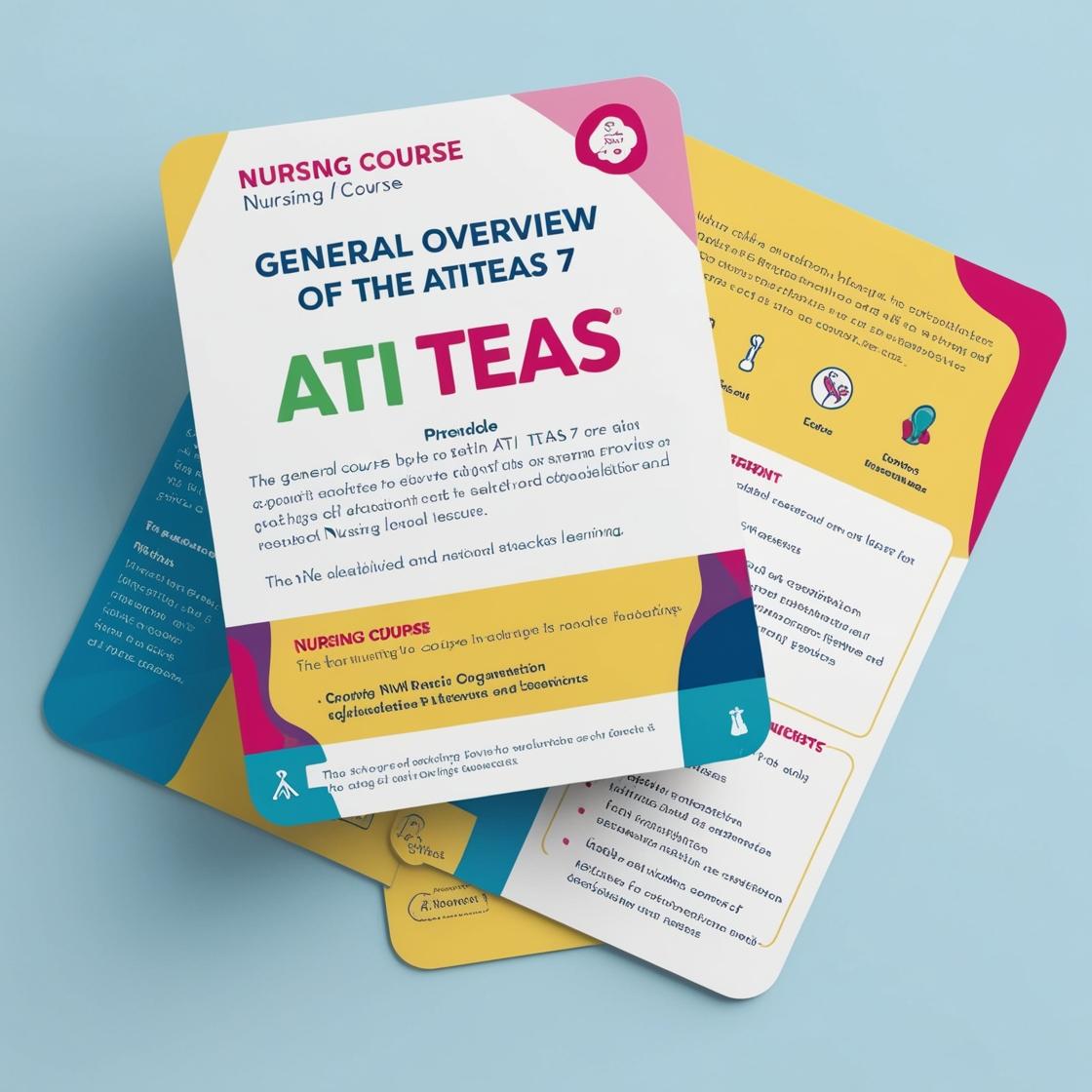ATI TEAS 7
TEAS Math Practice Test
1. What is the value of the sum of 3/4 and 5/8?
- A. 1 3/8
- B. 1 1/2
- C. 1 7/8
- D. 1 5/8
Correct answer: D
Rationale: To find the sum of fractions, they need to have a common denominator. In this case, the common denominator is 8. So, 3/4 = 6/8. Adding 6/8 and 5/8 gives 11/8, which simplifies to 1 3/8. Therefore, the correct answer is 1 3/8, which corresponds to choice A. Choices B, C, and D are incorrect as they do not represent the correct sum of 3/4 and 5/8.
2. Which of the following is NOT a way to write 40 percent of N?
- A. 0.4N
- B. N/40
- C. 2/5 N
- D. 40N/100
Correct answer: B
Rationale: The correct answer is B: N/40. To find 40% of N, you multiply N by 0.4, so 0.4N is the correct representation. Choice B, N/40, is incorrect because dividing N by 40 does not give you 40% of N. Choice C, 2/5 N, is equivalent to 40% of N since 2/5 is the same as 40% when simplified. Choice D, 40N/100, is also correct since 40% can be represented as 40/100, which simplifies to 0.4, making 40N/100 another valid way to write 40% of N.
3. What is the value of 0.0523 expressed as a fraction?
- A. 523/10000
- B. 523/1000
- C. 523/100
- D. 523/10
Correct answer: A
Rationale: To convert a decimal to a fraction, place the decimal value over the place value of the last digit. In this case, 0.0523 can be expressed as 523/10000 since the last digit is in the ten-thousandths place. Choice A is correct. Choices B, C, and D are incorrect because they represent different decimal values and do not match the correct conversion of 0.0523.
4. A scientist is trying to determine how much poison will kill a rat the fastest. Which of the following statements is an example of an appropriate hypothesis?
- A. Rats that are given lots of poison seem to die quickly.
- B. Does the amount of poison affect how quickly the rat dies?
- C. The more poison a rat is given, the quicker it will die.
- D. Poison is fatal to rats.
Correct answer: C
Rationale: A valid hypothesis must be a testable statement that predicts a relationship between variables. Option C is the only statement that presents a clear cause-and-effect relationship between the amount of poison given and the time it takes for the rat to die. Option A is descriptive without predicting an outcome, option B is a question rather than a statement, and option D is a general fact about poison and rats, lacking a specific hypothesis for testing.
5. What is the area of a rectangle with a length of 5 cm and a width of 4 cm?
- A. 9 cm²
- B. 20 cm²
- C. 10 cm²
- D. 25 cm²
Correct answer: B
Rationale: To find the area of a rectangle, you multiply its length by its width. In this case, the length is 5 cm and the width is 4 cm. So, Area = length * width = 5 cm * 4 cm = 20 cm². Therefore, the correct answer is 20 cm². Choice A (9 cm²), Choice C (10 cm²), and Choice D (25 cm²) are incorrect as they do not result from the correct calculation of multiplying the length and width of the rectangle.
Similar Questions

Access More Features
ATI TEAS Premium Plus
$149.99/ 90 days
- Actual ATI TEAS 7 Questions
- 3,000 questions with answers
- 90 days access
ATI TEAS Basic
$1/ 30 days
- 3,000 Questions with answers
- 30 days access
